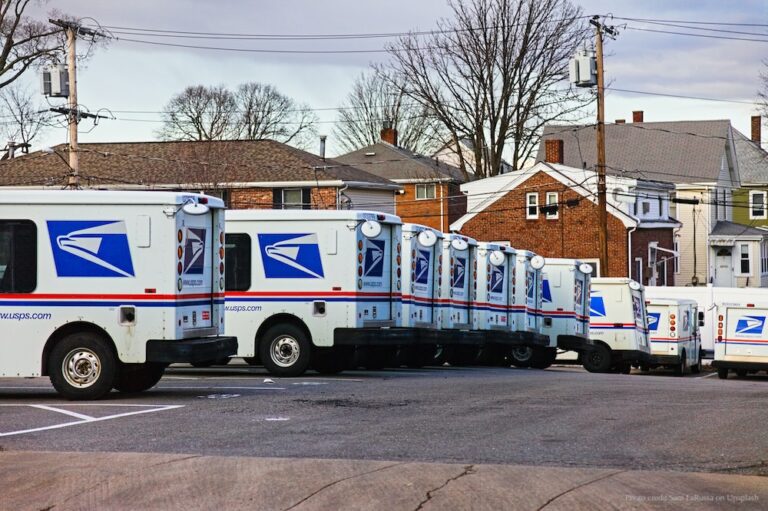Related Articles
Subscribe to the Greater Public newsletter to stay updated.
This site is protected by reCAPTCHA and the Google Privacy Policy and Terms of Service apply.

U.S. postal delays are in the news and causing many stations to wonder if direct mail delivery has been or will be affected.
Greater Public has operated its direct mail acquisition list co-operative and direct mail production collaborative for 13 years. During these years we’ve tracked the arrival time for every single mailing we’ve ever sent. We do this by adding “seeds” to each mailing. A seed is the name and address of one of our team members (slightly misspelled, for example) that is added to each and every mailing list used to produce a station’s mailing. Receipt of our seeds is confirmation of the delivery date of the mailing.
This history of tracking arrival times has given us reliable, longitudinal data on when direct mail can be expected to arrive, and when to be concerned if it’s delayed or hasn’t arrived at all.
Due to the volume of our mailings, Standard Mail rates are the most economical and average 3 to 10 business days or as many as 14 days from send date to arrival date. Sometimes mailings arrive in one-and-a-half weeks, sometimes in two-and-a-half weeks. We can request a USPS investigation if the mailing has not arrived within three weeks.
A three-week arrival timeline is rare. Once, nearly 20 years ago, after opening a case with USPS on a missing mailing, we were allowed to fly to the destination post office and search the mail room. We discovered that a postal worker had abandoned an entire bin of mail off to one side. It contained our mail and we were able to retrieve it.
Another time, we gathered a collection of mailings to be “trucked” from the east coast to the west coast. This process expedites mailings by bypassing the initial post-office processing, and delivers the mailings by truck directly to a regional destination post office for sorting. The truck in question happened to be repossessed during its journey and its contents were sequestered inside the vehicle in a repo parking lot.
As I said, extreme mail delays are rare.
I’m happy to report that we have not seen a pattern of mail delays since the beginning of the COVID-19 pandemic, nor during this recent period of USPS changes that are making headlines.
For this reason, we have not made any changes to our mail dates as of yet.
A pattern of delay is occurring if at least three separate mailings have arrived late. One or two late arrivals are likely to be circumstantial.
If you’ve identified a pattern, then back up your send date by a week to ensure its on-time arrival.
Make sure each mailing contains your seed name, and don’t forget to test the reply timeline for each mailing as well. We place a small check “donation” in an envelope, add a first class stamp, record its send date, and record the arrival at its destination.
First class mail delay cases can be opened with USPS after failure to deliver within one week. If your reply is being sent directly to a bank or another facility, record how long the donation takes to be fully processed at that location as well.
Our experience has taught us that there are times when mail slows down due to the volume of higher-priority mail being processed by USPS. One big example is Election Day. In past years we have refrained from mailing a week before and after an election. There is so much campaign mail from candidates being processed at that time that it can cause delays for our third-class direct mail and compete for donors’ attention. This year, due to the anticipated high volume of mail-in ballots, we’ll refrain from mailing between October 26 and November 4.
Another lesson we’ve learned from our decades of experience with direct mail is how truly valued public media is, especially in hard times. During the Great Recession of 2007-09, many stations feared that investing in direct mail during a period of financial instability would only result in low response rates. Instead, many stations received record direct mail donations. As audiences increase, generally so does direct mail response, regardless of the state of the economy.
This year, when the pandemic hit the U.S., we knew to advise stations to proceed with their direct mail as planned. Many stations that went ahead with spring fiscal-year-end mailing in February and March of 2020 had their best response ever. Donors value the service of public media especially in times of great challenge, and direct mail gives them the opportunity to give to something that matters.
At Greater Public we think of ourselves as an extension of the stations we serve. Incorporating these best practices will help boost your success and help meet your station’s income goals.

New to Greater Public? Create an account.